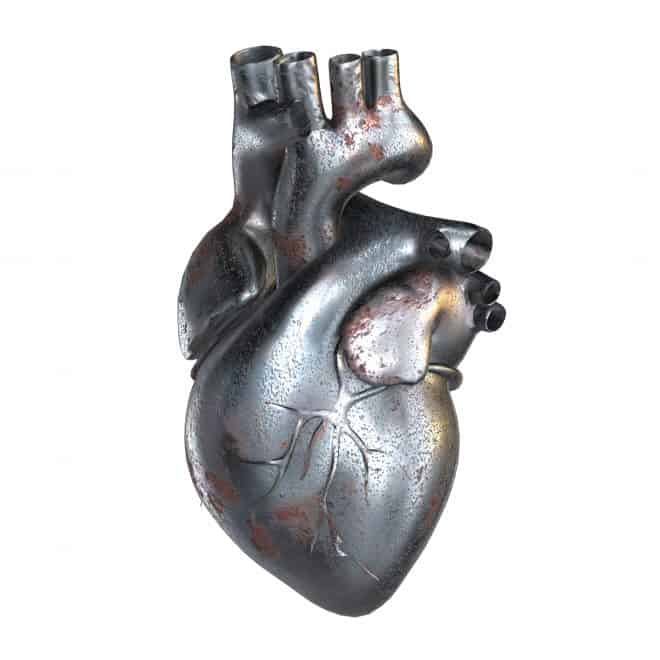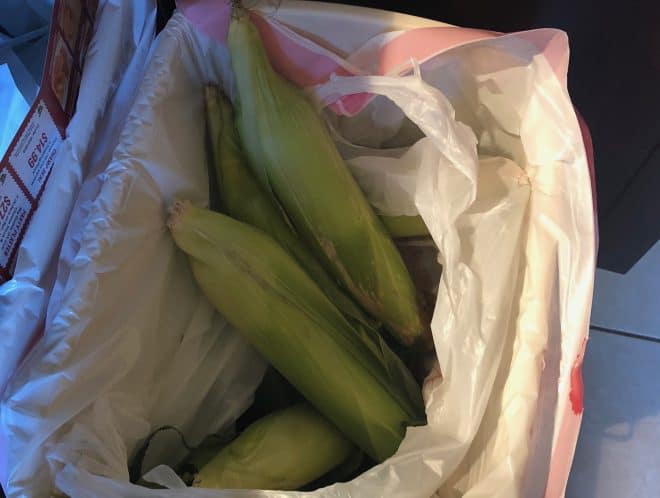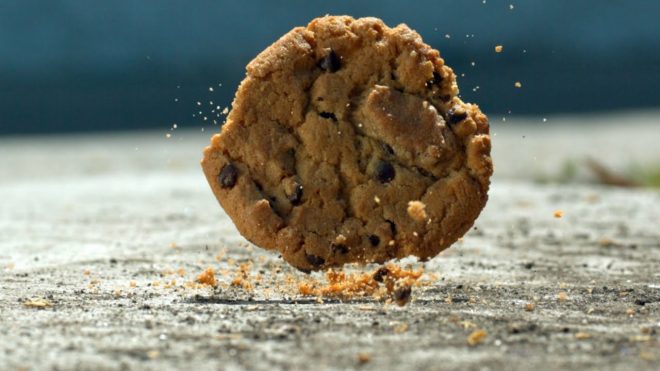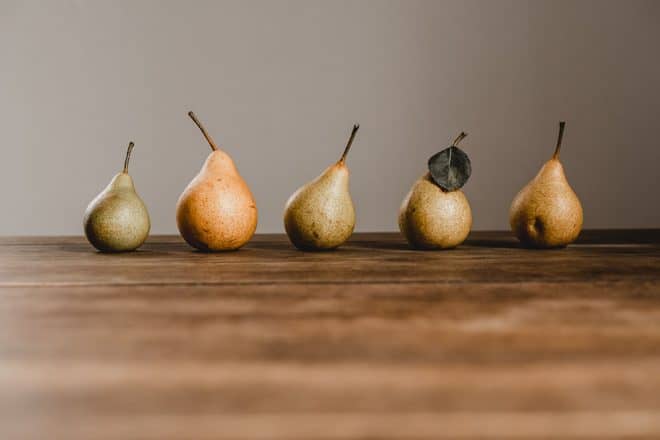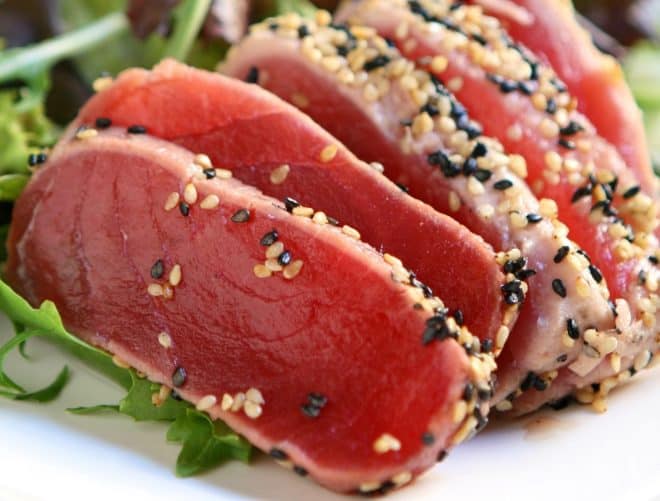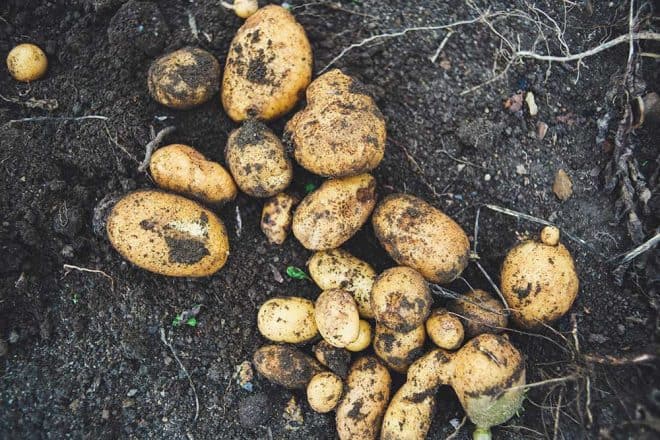Water is a medium, an aggregation of tiny H2O molecules, each with a positively charged end and a negatively charged end, functioning like a mini magnet. Billions of water molecules naturally align with each other to form a 3 dimensional matrix. Water is an electrical conduit transmitting electromagnetic frequencies in addition to allowing the dispersement of chemical compounds through diffusion. Both processes are needed for almost every bodily function. Read More
Category: Toxic chemical and heavy metal ingestion
A Metal for the Heart
Magnesium Deficiency, Glyphosate, and Coronary Artery Spasm
Last summer, the mainstream media brought our attention to the presence of glyphosate in the nation’s food supply. Testing proved that even beloved breakfast cereals, like Cheerios, contain traces of this chemical, the active ingredient in Round-up. The information that our bodies absorb glyphosate from contaminated food now needs to be disseminated — along with further research into how glyphosate may complicate common-enough problems, like magnesium deficiency. Read More
GMOs and Glyphosate – Feeding the World, Food and Poison
The corn all looked the same as if it had been cloned. The ears were same size, same girth, and same color. Even the tassels were the same length. So I casually asked the roadside attendant, “Is this GMO corn?” Read More
Man Boobs, Breast Cancer, and Plastics
I don’t often get to discuss gynecomastia — more commonly known as “man boobs” with a stranger.
After an arduous workout, I entered the small, hot, wood paneled room which was more crowded than usual. It was one of the only times I had been in the sauna without hearing the whining of music coming through earbuds. Guys were actually conversing with each other. Read More
The 5 Second Rule and Fallen Food
“Oops!”
The woman knelt down to pick up the chocolate covered strawberry from the floor and called out gleefully, “Three second rule!” Read More
Why I Care What I Eat
I’ve learned to enjoy imperfect fruit.
Flawless pieces of fruit look perfect because they have been sprayed with chemicals like fungicides and insecticides to kill off anything that might be tempted to grow or feed on their surface. Although there aren’t any bugs on the perfect looking fruit, there is a layer of chemicals, neatly sealed in place by wax, a sealant derived from petroleum. Read More
So Long, Sushi?
The schooner trip had been marked not by the excitement of seeing dolphins, but by the understanding that the ocean really has been contaminated.
Educating members of the next generation to limit their consumption of fish is a sorrowful task, but one that I, as a father of two, have felt obligated to pursue.
Why sorrowful? Because after explaining that there is toxic mercury in fish, I have had to answer questions such as “Why?” This has led to further explanations that this pollutant is the direct result of the ever increasing demand for energy by humans. Our ingenuity and technology has poisoned the ocean. For our children, it’s just one more hazard they need to grow up in and face in the everchanging environment.
My kids know that mercury is bad for the body, but they don’t really understand why. Telling them that mercury can cause disorders of the nervous system is too abstract. So, I’ve just told them that eating fish with too much mercury can damage the brain, particularly those of children and in the unborn, who’s mothers eat too much fish. They have known for many years that the ocean’s fish are laden with mercury. For others though, the presence of mercury in fish is unacceptable. This became clear to us on an annual beach vacation.
We had just finished dinner at a beach front seafood restaurant and were waiting to take a sunset cruise amidst the dolphins off the Maryland coast. A local fisherman sat on the dock bench next to his wheel barrow, decapitating his catch. My children both stared in horror as the head of the beautiful fish dropped into the white 5 gallon bucket. The whitish pink flesh was exposed in the fisherman’s arms. Keeping my distance, I sensed my children’s excitement at their perceived independence. That’s when the #$%$ hit the fan.
“Ewww!!! I can see the mercury!”
My 8 year old son stared at the 3 foot long fish, feeling completely comfortable with his proclamation.
The fisherman shouted, “There’s no mercury in this fish!!”
My son just stared at him, frightened and confused.
The fisherman’s rant continued, “That’s the problem with this country, you environmentalists. You teach your children… blah, blah, blah.” The rest of his words faded into nothingness.
I walked over and carefully extricated my children from the hostile encounter.
At the de-briefing, I clarified that they were correct in knowing that there was mercury in that fish. But, they weren’t able to see it. People my age grew up with mercury thermometers and barometers. As my children have never actually seen mercury, perhaps my son thought the glistening cartilage within the fish’s frame was the toxic element. Who knows.
Mercury content is the main reason why we only eat a few, certain types of fish. We strive to eat varieties reported to have the lower mercury concentrations, such as salmon, tilapia, cod, and seafood. Although in the distant past, we used to enjoy family meals of sushi on Friday nights, my children are now limited to one 4 oz serving of fish a week.
Although the EPA set up guidelines to provide suggested maximum fish intake per week many years ago, it seems that most people still know nothing about these limits. Fish varieties that may contain the highest levels of mercury, among them swordfish and ahi tuna, are still sold in exclusive restaurants and expensive markets. Let’s be real. It’s not not like you are going to get a swordfish with less mercury if you pay more money for it.
The www.nrdc.org website has an excellent list of fish types and rates each variety by level of mercury concentration. Check it out before your next fish meal.
Yeah, I Love Heavy Metal – Just not in my Tomato Sauce
My journey to an aluminum foil alternative began inconspicuously enough: When I first opened this particular package of aluminum foil, it seemed fine. Perhaps it was because the lighting was bright or I just wasn’t paying attention. But when I went to wrap the dinner leftovers later that evening, I noticed a peculiar rainbow type pattern on one side of the foil. It was a smear that ran lengthwise on the roll. I thought that maybe it was too old or had somehow mildewed from being in the basement too long, which has a tendency to be damp. I unravelled the roll a few feet to try and find foil that looked more normal, but had no luck. Hurried, I chose to make sure that the weird looking side of the foil was facing away from the food, so it didn’t contaminate the food with whatever this stuff was. Somewhere, I had heard that there was one side of the aluminum foil you didn’t want to have contact your food anyway. This became my modus operandi for the next few weeks. But, each time I handled the foil, I was irked by the blemish. Finally, I threw the box into the recycling garbage. I was pleased with myself for being willing to toss it out, for I’m usually one who doesn’t like to “waste” things.
As if I had been living a bad dream, when I opened the food wrap drawer to make school lunches the following night, that roll of tarnished aluminum foil was back in the drawer! Someone must have salvaged the foil out of the garbage. Ugh. Now, I had to throw the foil out a second time. Not wanting to make a habit of this, I buried the foil deep in the garbage so no one would dare go and get it out. Then, I turned the computer on and began researching aluminum foil. It turns out, after almost 70 years after this invention, it’s not a product you want to have routinely touch your food.
Foil is fine for a wrapping most cold dishes, as long as the food isn’t acidic. Wrapping a sandwich is fine. When aluminum is wrapped on food and heated, the foil releases tiny aluminum particles into the food it is protecting from drying out. Leaching also happens at room temperature when the foil is resting comfortably on an acidic food, such as tomato sauce. How many times have I not only wrapped my leftover spaghetti and sauce with aluminum foil, but then placed the dish along with the foil in the oven to reheat the meal?!
Aluminum is a heavy metal that is toxic to your nervous system. You don’t want to eat it. There is an association between aluminum and neurodegenerative diseases such as Alzheimer’s disease and Parkinson’s disease.
What to do?
Consider a useful aluminum foil alternative: unbleached parchment paper. I prefer the “If You Care” brand that uses silicone for a nonstick coating instead of other chemicals. It’s cheap, clean and it will provide an appropriate barrier between your food and your aluminum foil. Put your food in a Pyrex dish, CorningWare or a ceramic dish and first cover your food with parchment paper, and then wrap with foil. You can reheat your food in the oven with the parchment paper under the foil. It’s a simple solution to reduce your exposure to a common household toxic heavy metal.
See also: Avoiding household toxicity with The Radon Test Ruse.
Eat to Nourish, Not to Kill
It was 1983. Halfway down Mt. Katahdin, I noticed my buddy was in terrible shape. We still had boulders to descend and it was beginning to rain. Dave kept his humor, but I knew his stomach was cramping. It wasn’t pretty. Upon our arrival home, Dave was misdiagnosed as having ulcerative colitis. His punishment: long term antibiotic therapy with sulfa drugs.
Before our trip, Dave had taken ampicillin for a “cold”, which wreaked havoc on his digestive system. At that time, doctors knew little about beneficial intestinal bacteria or that antibiotics could damage this “microbiome.” These bacteria support proper digestion and provide essential nutrients, including Vitamin K, Vitamin B12 and Vitamin B7, strengthening the immune system.
If antibiotics selectively kill a segment of the microbiome, the intestine can then become overpopulated with potentially harmful bacteria. One particular strain, C. diff, can cause a severe form of colitis, accompanied by stomach pain and diarrhea. After more antibiotics, a healthy microbiome then needs to be restored.
Antibiotic residues are prevalent in the food supply. Frequently eating antibiotic laced food is not a good idea. Beef cattle are fed antibiotics to help them gain weight. Dairy cattle are treated to prevent mastitis, an infection caused by hormonal overstimulation to produce milk. Chickens and farm raised fish too are fed antibiotics to keep them healthy in their overcrowded homes.
Vegetarians aren’t spared. Glyphosate, a common herbicide used by farmers, has antibacterial properties. Genetically modified organisms (GMO) designed to grow in treated soil absorb the chemical, Eating GMO crops, such as corn or soybeans ,will provide a low dose, frequent exposure to antibiotics. Wheat may also contain traces of glyphosate as it is now common to spray wheat fields a few days before harvest to kill the plants, making for an easier harvest.
So what can you do?
Reduce your intake of food laced with antibiotics. Eat organic meat, grass-fed beef and organic chicken. Choose packaged meats with labels that read “animals raised without the use of antibiotics”. Eat wild caught fish.
Choose organic vegetables, fruits, and processed foods. Feed your children organic milk products or those labeled “no antibiotics added”. Purify your drinking water with a high quality filter as even bottled water may contain traces of antibiotics.
Yogurt, Kefir, sauerkraut and supplementation will help create and maintain a healthy microbiome. If bacteria are happy in your gut, they will grow and reproduce. But, if you ingest antibiotics while taking probiotic supplements, what’s the point?
An unhealthy microbiome can impair digestion. Some believe gluten sensitivity is caused by a damaged intestinal microbiome. Let’s face it, people have been eating bread products for thousands of years. Why are so many now unable to digest gluten? If you have been diagnosed with a malabsorption syndrome such as gluten sensitivity or celiac disease, try to build your microbiome. After a few months, see if your symptoms improve. Take care of your microbiome, improve your health and immunity. It’s worth it!
Photo of Mount Katahdin by Tyler Farmer
No More Crispy Home Fries
Was it an act of defiance? Once again, I requested extra crispy home fries. This time though, I was secretly mired in conflict. I love my potatoes burnt to a crisp. But, after reading a recent scientific paper about the cancer causing effects of fried potatoes, I’m gearing up for yet another change in my diet.
To quickly summarize, the hazards of adding nitrates to food dates back to a Norwegian Mink farm in the 1950s, when animals began to suddenly die from liver disease and cancer after being fed a new diet of fish meal preserved with nitrites. It was soon discovered that the nitrites were being converted in the animal’s stomach to nitrosamines, sickening and killing the animals.
Both nitrates and nitrites are naturally present in many grains, fruits, and vegetables including celery, leafy greens and potatoes. Nitrates are converted to nitrites in the body. Nitrites are then chemically converted into either beneficial or harmful compounds. When nitrates are ingested in vegetables alone, they are usually turned into healthy nitric oxide which can have beneficial cardiovascular effects. But, when nitrates are combined with degrading proteins in the presence of high heat (cooking) or a strong acid (digestion), they form nitrosamines.
Nitrosamines are carcinogenic, associated with cancers of the esophagus, stomach, colon and rectum. Nitrosamines have also been associated with Alzheimer’s disease, Parkinson’s disease and type II diabetes. This is bad stuff.
Because nitrites/nitrates prevent bacterial growth, have a mild salty flavor and redden meat, food producers apply synthetic and natural occurring nitrates to chemically preserve meats and other foods. Your skillet, grill or broiler can become a perfect crucible for the production of nitrosamines when you cook hotdogs, bacon or sausage. To address this problem, manufacturers have significantly decreased the amount of nitrates they use and they add Vitamin C to processed meats, which inhibits nitrosamine formation.
Gratefully, the incidence of colon carcinoma is going down in this country. This is in part related to screening exams, but also likely due to the decreased concentration of nitrates added to processed meats. As of October 2015 though, colorectal carcinoma was still the 3rd most common form of cancer death in the US, so perhaps more changes are needed.
According to recent research by Qajarbeygi et al, it turns out that deep frying or pan frying potatoes produces nitrosamines too. Although the researchers didn’t test foil wrapped potatoes cooked on hot charcoals, I think this too would cause nitrosamine production.
It was previously believed that the potato skin contained all the nitrates so if you peeled the potato, you would remove them. But the potatoes were peeled in this study. Potatoes contain vitamin C, but apparently not enough to prevent nitrosamine formation.
What can you do?
1. Reduce your intake of processed meats and look for labels that specify no nitrates added. Even then, check the ingredient panel for celery juice or celery salt. Celery is a source of nitrates and the chemical effect is the same.
2. Reduce consumption of other foods containing nitrosamines, including beer, artificial cheese, smoked and salted fish.
3. Boil or bake your potatoes and sadly say goodbye to crispy home fries.


